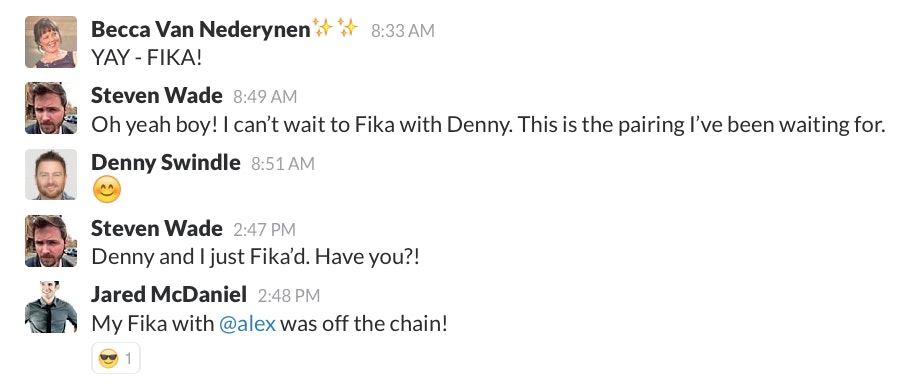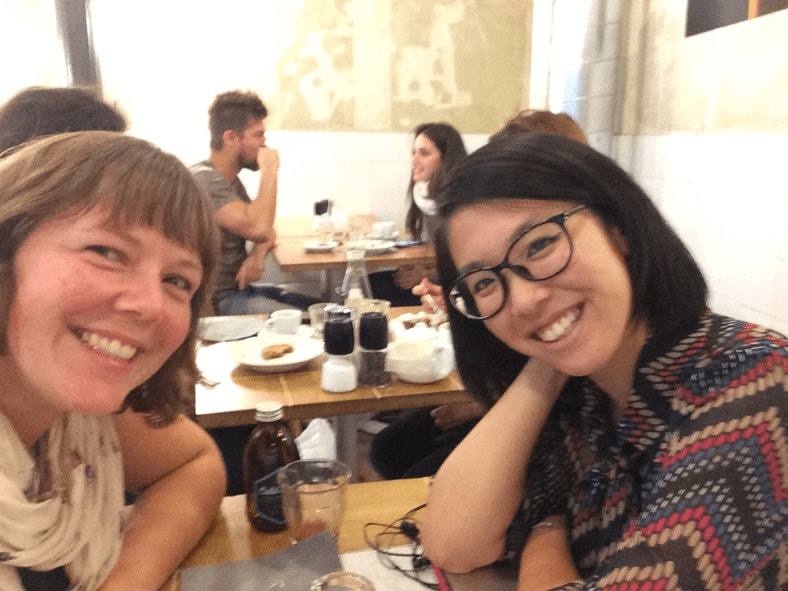In the words of Helen Keller, “Alone we can do so little; together we can do so much.”
The benefits of social capital—collaborating and connecting with those you work with—can extend far beyond completing a simple project. When you invest in ways to build social capital within your team, you’ll generate momentum and boost productivity throughout the entire company.
Take it from five-time CEO Margaret Heffernan, who spoke at length on the topic during her June 2015 TED Talk. “What matters is the mortar, not just the bricks.” She’s talking about social capital—the glue that holds your company together. When teams work and interact together, that interdependency promotes trust and the open flow of ideas.
When you trust your co-workers, you can ask them for help. Heffernan says,
“Helpfulness is absolutely core to successful teams and routinely outperforms individual intelligence.”
At Help Scout, our mission is to help people build companies their customers love. Helpfulness is core to our mission and how we interact with each other.
So, yeah, water-cooler talk is pretty important.
Building a remote team like ours might seem like a wild idea, especially when studies show how important social capital is to the success and productivity of the people you hire. If people don’t work next to each other, how will they interact enough to build the trust they need to be candid and helpful?
It’s not impossible. Here’s how we’ve made it work.
Scheduled Serendipity
People in Sweden have a sweet tradition called fika: the act of taking a break during the workday for conversation, coffee, and cake. While having an excuse to eat pastries is already appealing, fika is an easy way for a company to invest in social capital.
It’s about making time for the important (but not urgent) task of chatting with your colleagues—a habit that strengthens the glue that holds your team together.
At Help Scout, Friday Fika is our adaptation of this custom. Everyone on our team takes time on Friday for a 15-minute video chat with someone outside of his or her department; it’s the remote equivalent of water-cooler talk. Caffeine and sweets are welcome but not required.
The idea came together after our second team retreat, when we received feedback that our staff loved the face-to-face time with people they didn’t normally work with. How could we have that happen on a regular basis?
I spoke with Liz Hall from Trello, and she told me about CoffeeTime, a similar practice that started with similar intentions: to make it easy for cross-team small talk to occur. CoffeeTime later evolved into what Trello calls “Mr. Rogers,” and has played a huge part in keeping their 50% remote team connected to HQ.
After learning how successful CoffeeTime had been for Trello, we were ready to give it a try at Help Scout. We’ve being fika-ing for more than six months, tweaking our process slightly along the way.

How We Do It

A vacation to Paris turns into an impromptu fika!

If it sounds like a lot of work for someone to do every week, it is. But it’s important in helping us build trust and bond with one another. Sometimes you don’t know what will stick, so experimenting with things that don’t scale helps us figure out which ones are important enough to keep going with. Almost everyone on the team looks forward to Friday Fika, so it’s here to stay.
Because we do want Friday Fika to scale, we’ve enlisted the help of Resilient Coders —a Boston organization that helps low-opportunity youth to learn how to code—to build us a tool to make our matchmaking easier.
What We’ve Learned
Sound like something you want to set up for your remote team? Here are a few things we’ve learned along the way:
Introduce your version of Friday Fika to the team as an experiment. If people seem hesitant at first, let them know that it’s an experiment, and they might be more open to it.
Unstructured, group video chats don’t work well for a team of mostly introverts. We learned early on that, for us, a group hangout was a little awkward.
Let people figure out when they want to meet. With different time zones and work patterns, picking a universal hour for everyone to fika is a losing battle.
Experiment! Every team is different, so what works well for Trello or Help Scout might not work for your team.
CoffeeTime, Mr. Rogers, Friday Fika—it doesn’t matter what you call it. What’s important is getting members of your remote staff together for some regular 1-on-1, face-to-face time to strengthen your team and help you build momentum. After all, teams that work well together can accomplish great things together.







